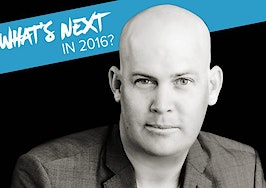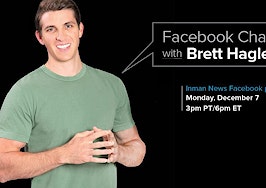- Successful non-profits are built on solid business savvy and total transparency.
- Identify a problem and have a clear end goal on how to solve it.
- Social media and access to crowdfunding allows everyone to make a change.
This past October, Brett Hagler won the hearts of our Luxury Connect attendees and Inman readership with his non-profit, New Story. In the course of a few days, we were able to raise $18,000 to help New Story continue their work of helping families on the brink of homelessness in Haiti.
Here’s Brett’s insight into the building blocks of creating an effective non-profit:
What was your first job? And how would you recommend other entrepreneurs prepare to launch and run their first business?
Right out of college, I was working part-time doing sales for a startup and doing sales for another company that allowed me to meet a great network of people that I could later leverage for a business I started. So the best way to prepare includes: building a network, learning like crazy (business books) and finding a problem that’s truly a problem.
What three things should someone consider before starting a non-profit?
- Operate it like a for-profit business by leveraging technology.
- Figure out what your end goal is.
- Stay away from the status quo of charities — create something different.
What’s one thing that has been far harder than you expected in getting New Story off the ground? And how did you solve it?
In the beginning, we were only focused on getting individuals involved with crowdfunding campaigns or direct donation, but we lacked great partners. We’re now lining up an excellent group of partners to help spread the word as new channels.
With so many non-profits out there, how do you stand out from the rest and convince individuals to donate to your cause?
We have a simple belief that when you give to a cause you should know exactly who you’re helping, where 100 percent of it goes, and the exact end result of the people you helped. In doing that, we provide a unique experience of transparency and personal connection.
How can more people truly know their donation is going to the cause or people they are supporting?
Non-profits can either be very transparent about what percentage goes to overhead and why, or by splitting public and private (overhead) into two bank accounts like we do. Our promise is that 100 percent of public donations go to homes, and we get a small group of private donors to fund overhead.
Where are non-profits going wrong in their well-meaning projects overseas and here?
I don’t know the exact answer, but I believe it has to do with directly connecting donation to tangible projects compared to putting money into a “big bucket” and allocate it later.
How do you decide the next location to help?
We look at the opportunity to work with an amazing local partner, local government and a project that is almost ready to get started. We also need to have a clear before/after story for the transformation of a community.
As a young entrepreneur, do you find that millennials are more or less engaged in helping others?
I think millennials are more engaged because of the Internet, pictures, video and the ability to make an impact through crowdfunding campaigns or social media. There’s no reason not to make a change.
To check out the rest of Brett’s answers, click here.
Remember to see Brett in person at Inman Connect New York on January 28 as he talks about “Social Action: Put Your Money Where Your Heart Is.”








